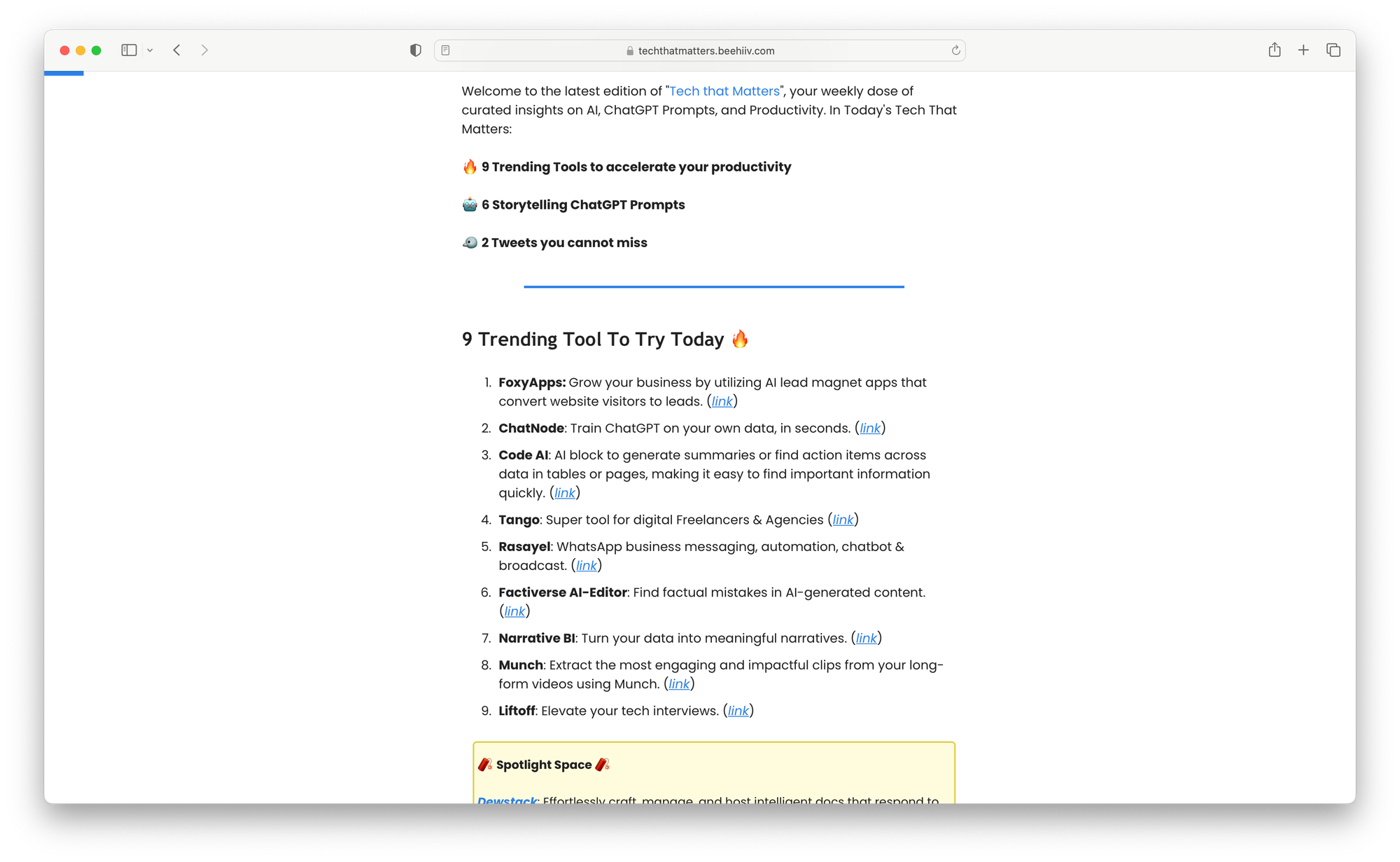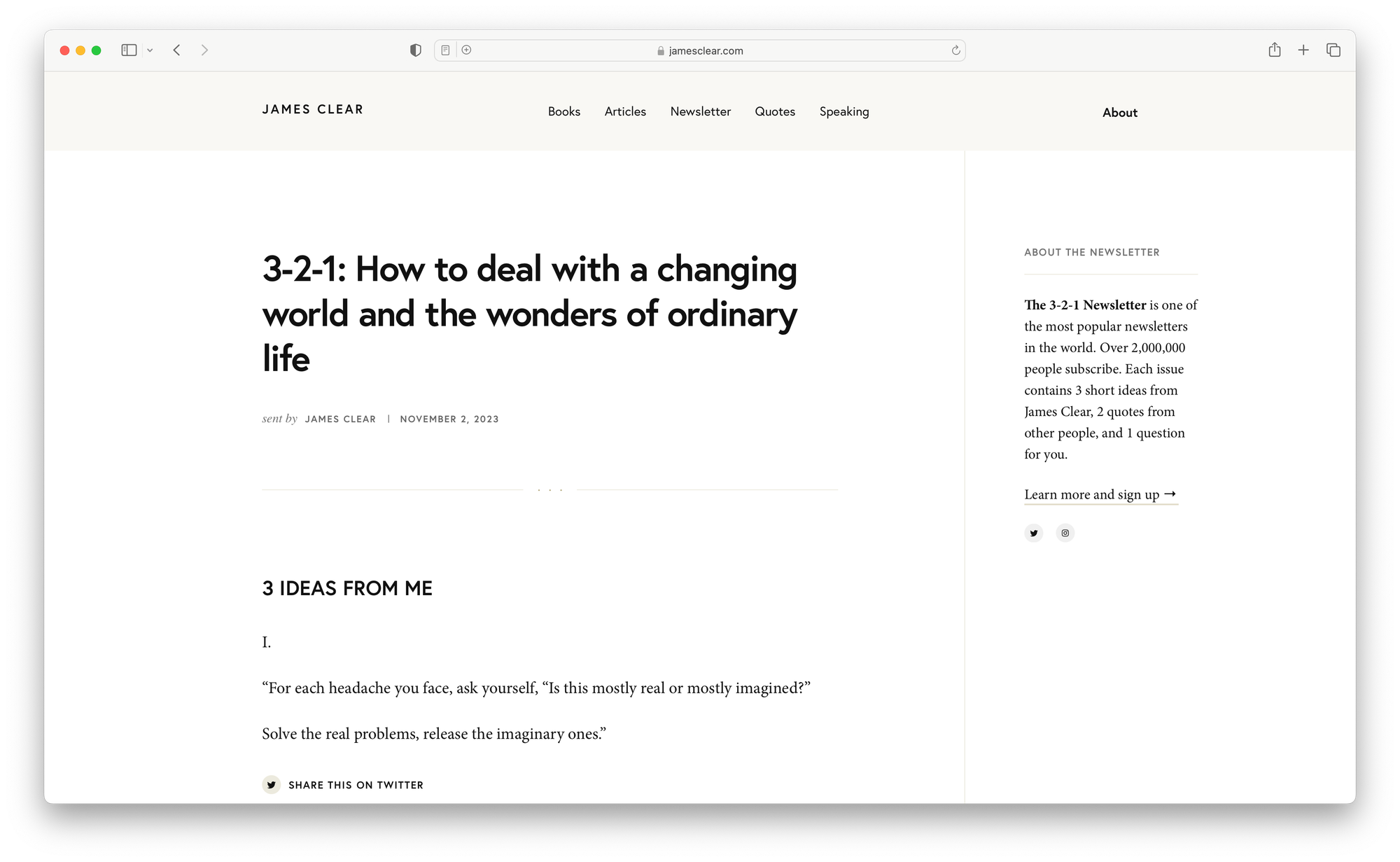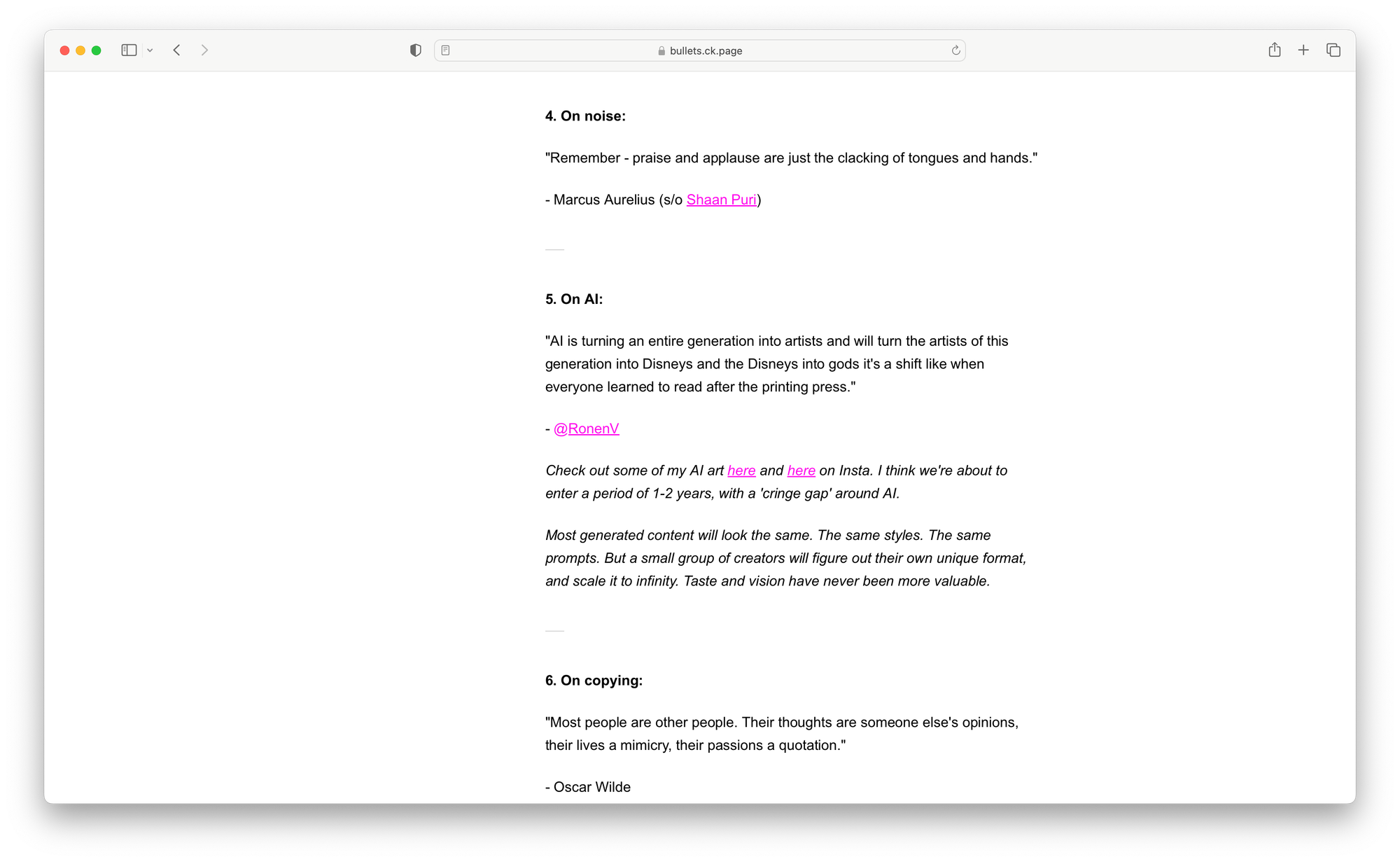I hate newsletters that are just 'recycling centers' [#47]
Even James Clear's 3-2-1 newsletter is a recycling center.
![I hate newsletters that are just 'recycling centers' [#47]](/content/images/size/w1200/2023/11/sigmund-aI4RJ--Mw4I-unsplash.jpg)
Many newsletters function as the internet's recycling centers. These newsletters take content that already exists, repackage them into a 'palatable' format, add about one paragraph of original writing, and then press 'publish'. They are incredibly lazy, yet work incredibly well — and I hate them. Today, I'll discuss:
- Various examples of recycling center (RC) newsletters (or blogs)
- Why people are incentivized to create and maintain RC newsletters
- Why I hate RC newsletters (and why you shouldn't read them)
1
There are too many RC newsletters to count, but I'll highlight a few here:



Note how they recycle other people's content and add little original thought of their own — the hallmark of a typical RC newsletter piece. But if these RC newsletters are lazy and half-baked, why do people still choose to write them?
2
RC newsletters mainly exist for two reasons:
1: Writing is hard!
Writing an article in a clear, well-written, engaging way is difficult. That's because writing, in general, is hard. When someone writes an RC newsletter piece, they end up with a piece of writing, but they aren't writing. They are curating and commentating, because they're taking content that already exists and writing a few short sentences on them. It's way easier to "write" an RC newsletter piece than to write an original piece — and as a general rule of thumb, most people will always choose the easier path.
2: Reading RC newsletters is easy
As humans, we love consuming palatable content, and we especially love lists (this is ironic, I know). Most RC newsletters use numbered lists and a defined structure, and it's easier to commit to reading a piece of writing if you know exactly what you're going to get. A 2013 New Yorker article summarizes the appeal of lists:
The article-as-numbered-list has several features that make it inherently captivating: the headline catches our eye in a stream of content; it positions its subject within a preëxisting category and classification system, like “talented animals”; it spatially organizes the information; and it promises a story that’s finite, whose length has been quantified upfront. Together, these create an easy reading experience, in which the mental heavy lifting of conceptualization, categorization, and analysis is completed well in advance of actual consumption—a bit like sipping green juice instead of munching on a bundle of kale. And there’s little that our brains crave more than effortlessly acquired data. Source.
It's not surprising that RC newsletters have higher open and click-through rates than most newsletters, because they are incredibly appealing and easy to digest. And because open and click-through rates (generally) indicate a newsletter's success, newsletter writers will often resort to RC newsletters.
3
I hate RC newsletters because they are lazy. I don't want to read half-baked articles that just regurgitate 'wisdom' that could be found on a Twitter feed or Google search. I want to read interesting articles where the author makes an effort to entertain, educate, or inspire me.
If you regularly read RC newsletter pieces, you're supporting those lazy 'writers'. Instead, read original pieces that dig deep on a certain topic, or at least ones that have some semblance of original content.
![Why do I write online? [#55]](/content/images/size/w960/2024/02/glenn-carstens-peters-npxXWgQ33ZQ-unsplash.jpg)
![Journaling with plain text files [#48]](/content/images/size/w960/2023/11/sixteen-miles-out-3ZvHsFiZyME-unsplash.jpg)
![5 guidelines for your college admissions essays [#44]](/content/images/size/w960/2023/10/aaron-burden-CKlHKtCJZKk-unsplash.jpg)
![How writing is like building a LEGO set [#32]](/content/images/size/w960/2023/08/32unclean-min.jpeg)